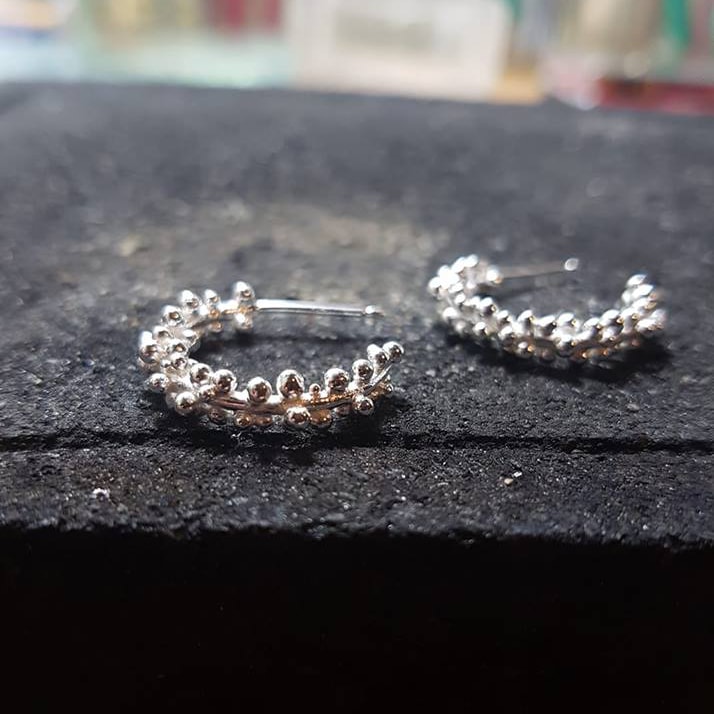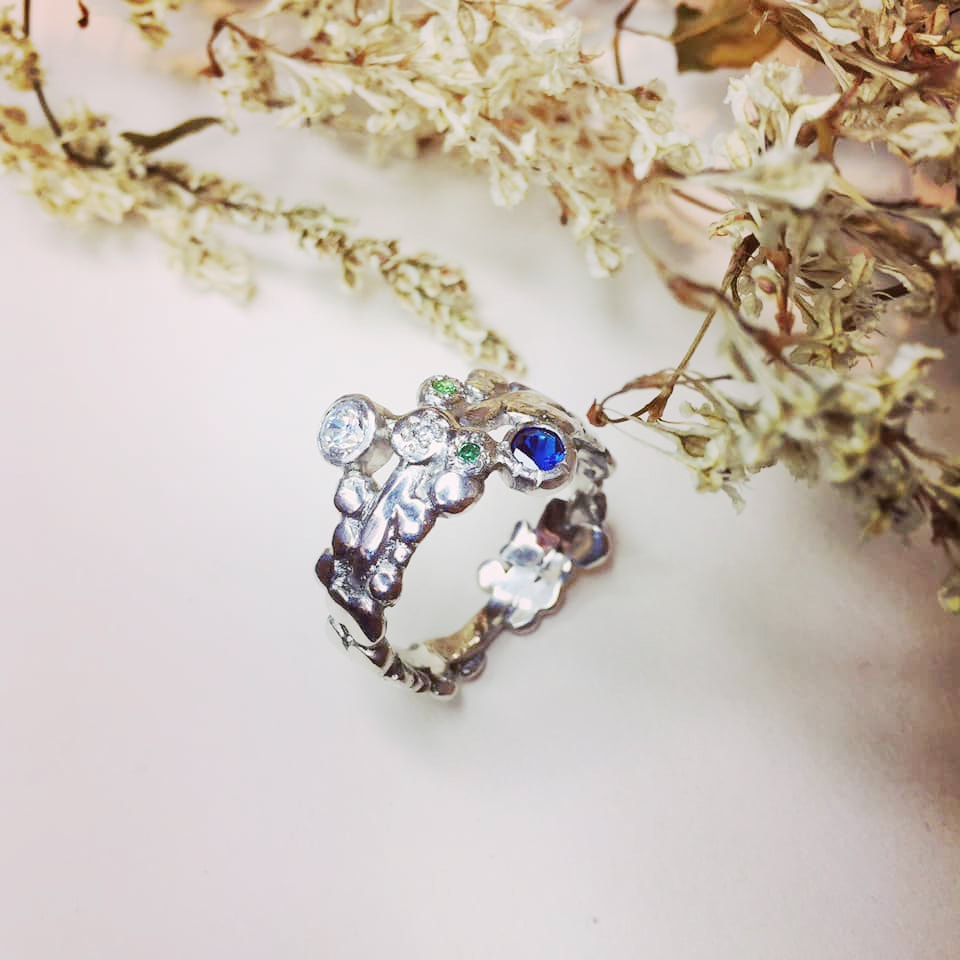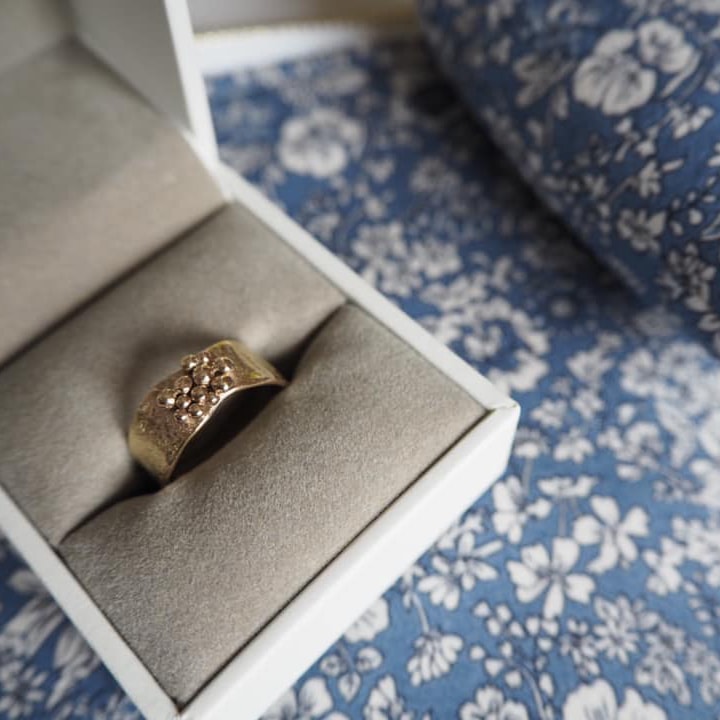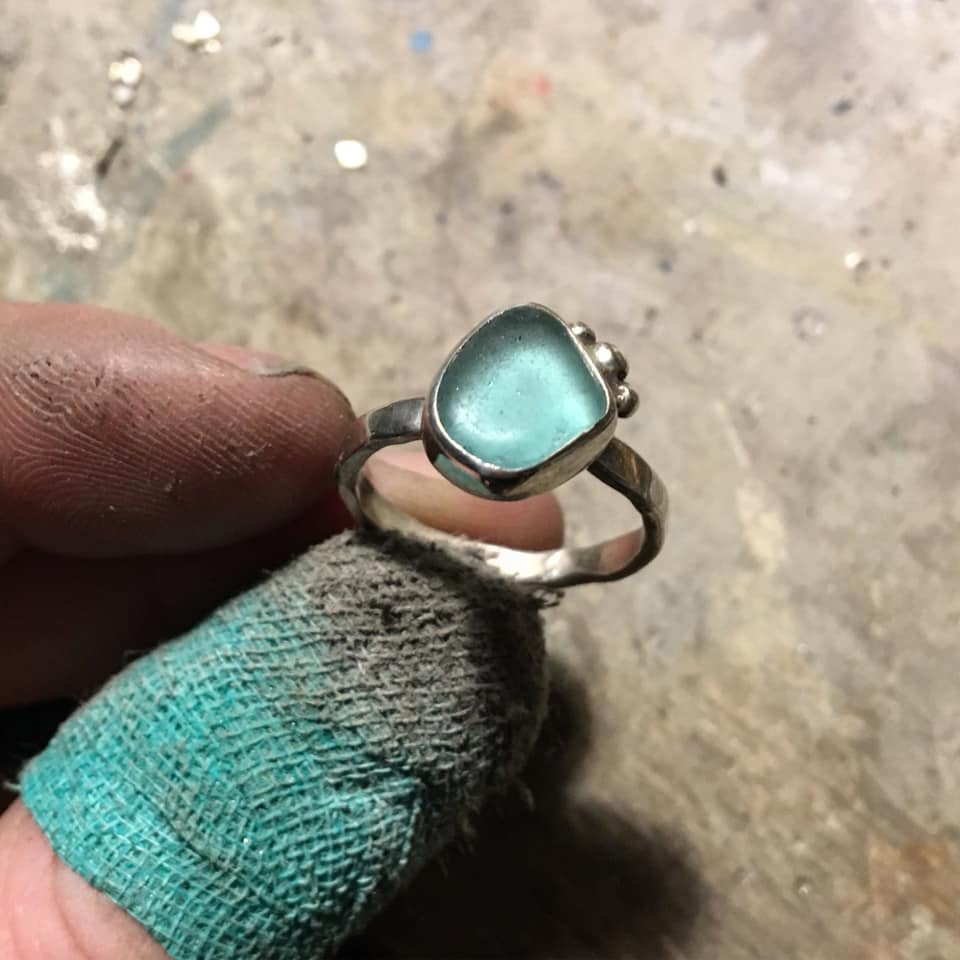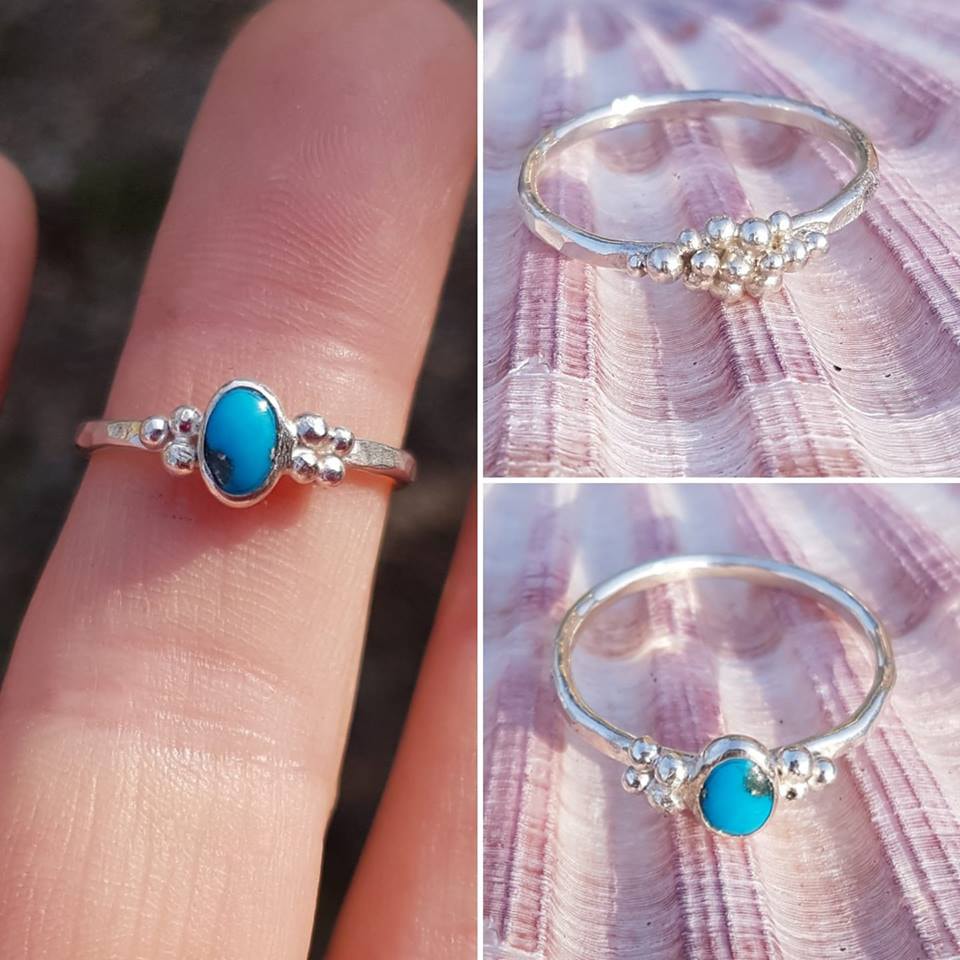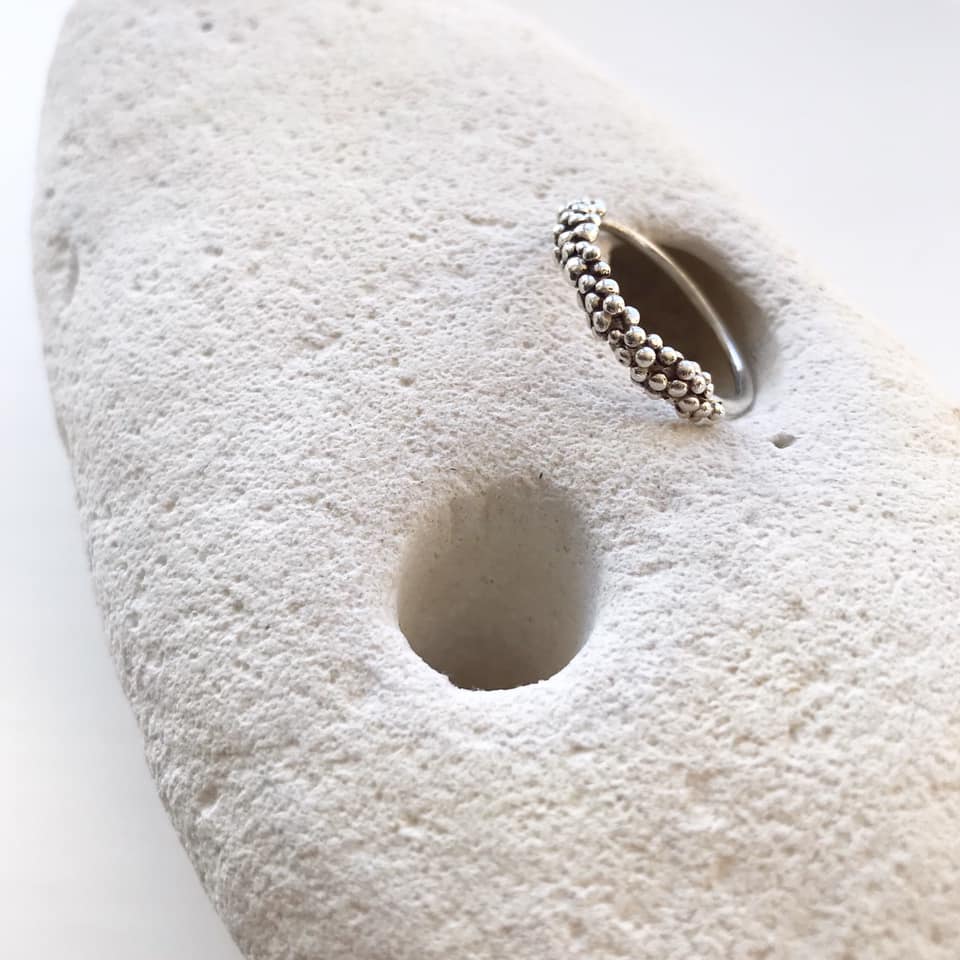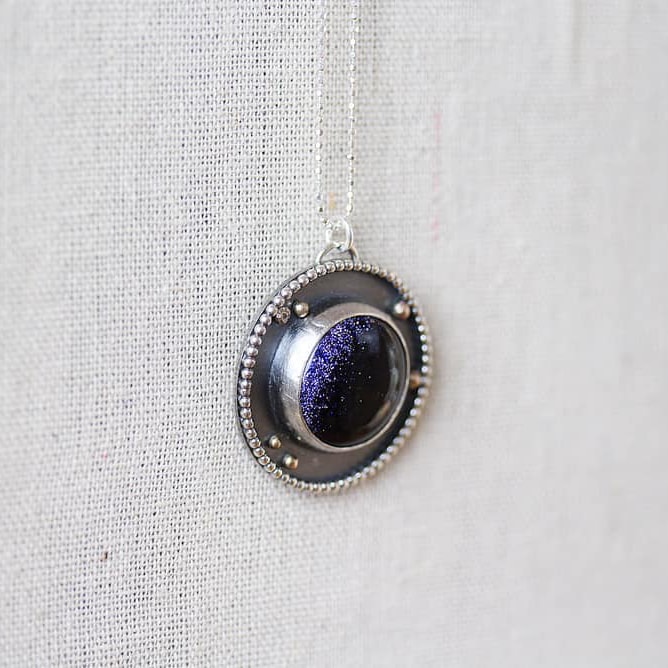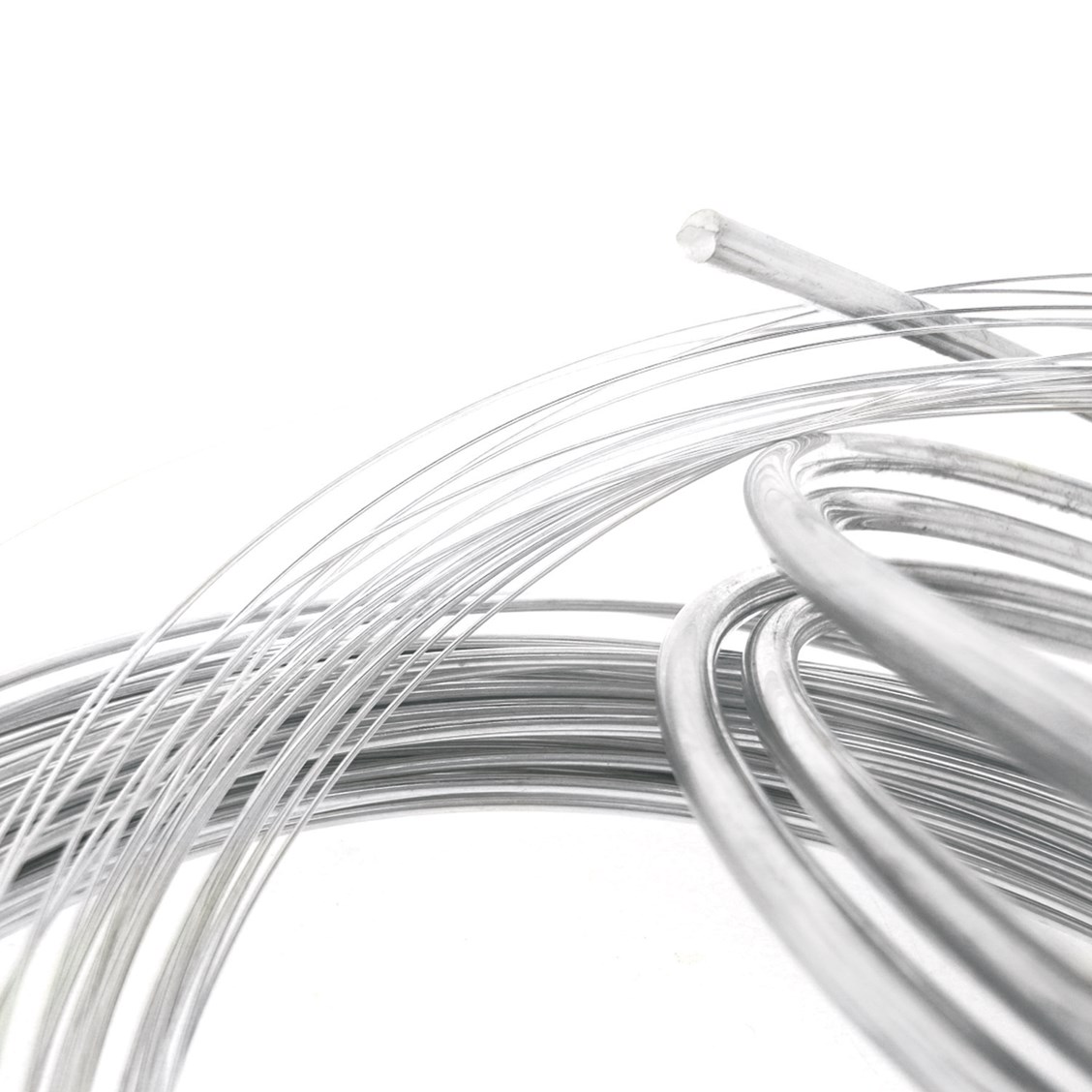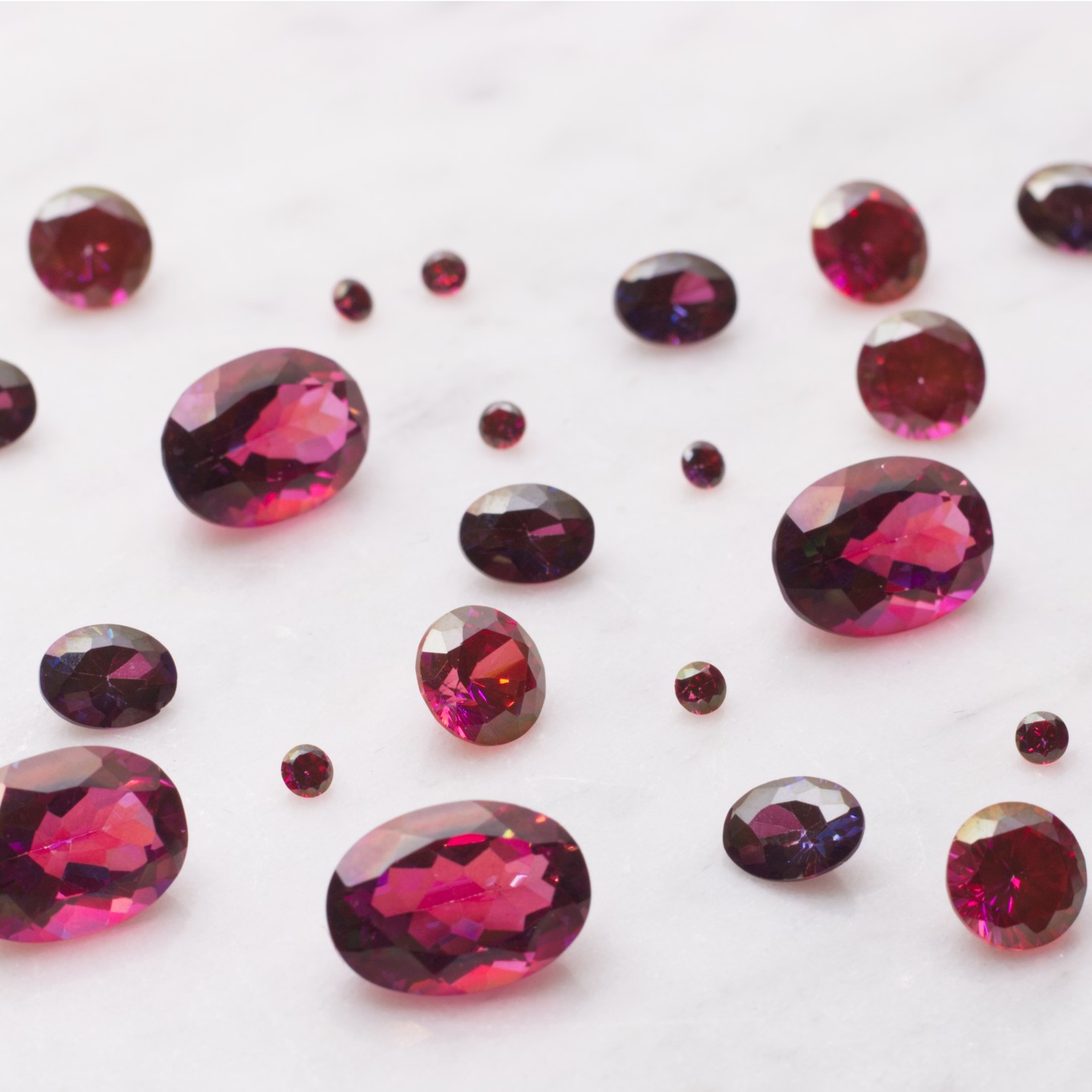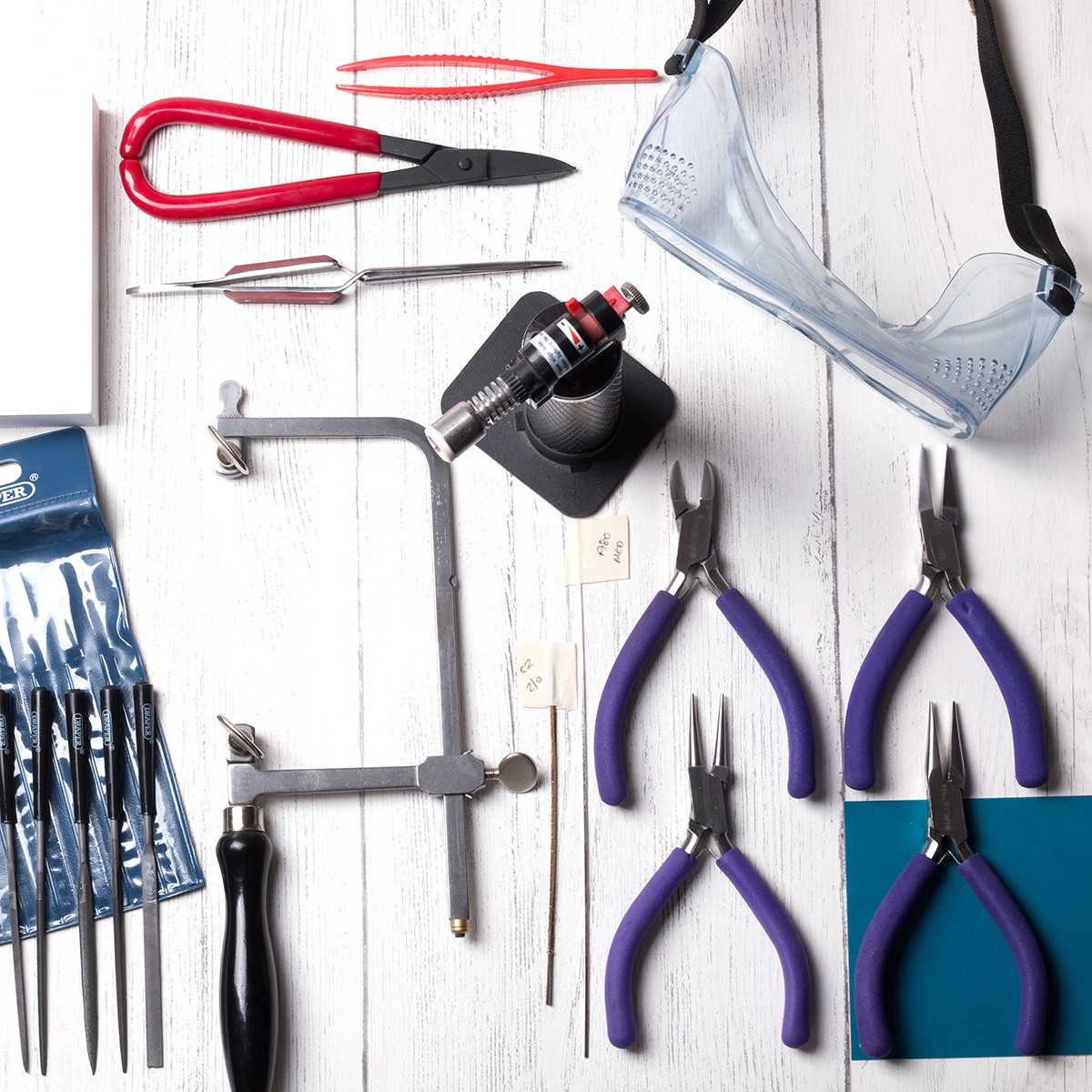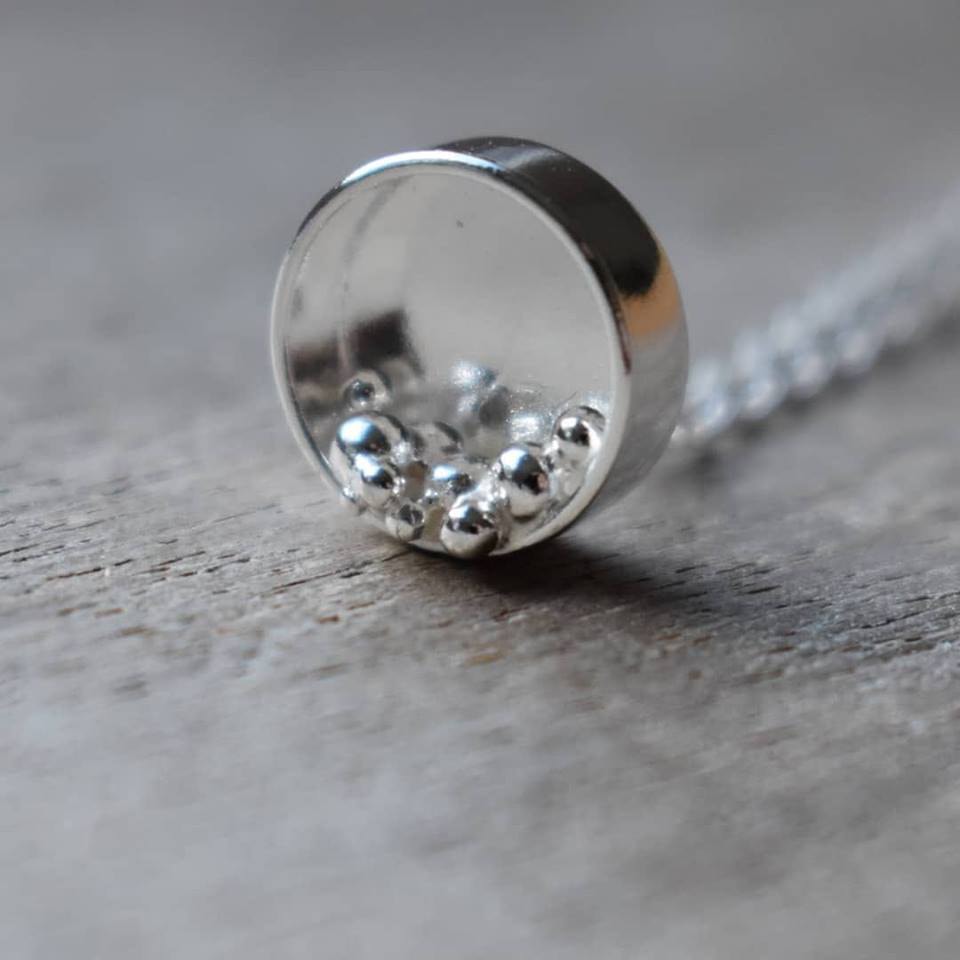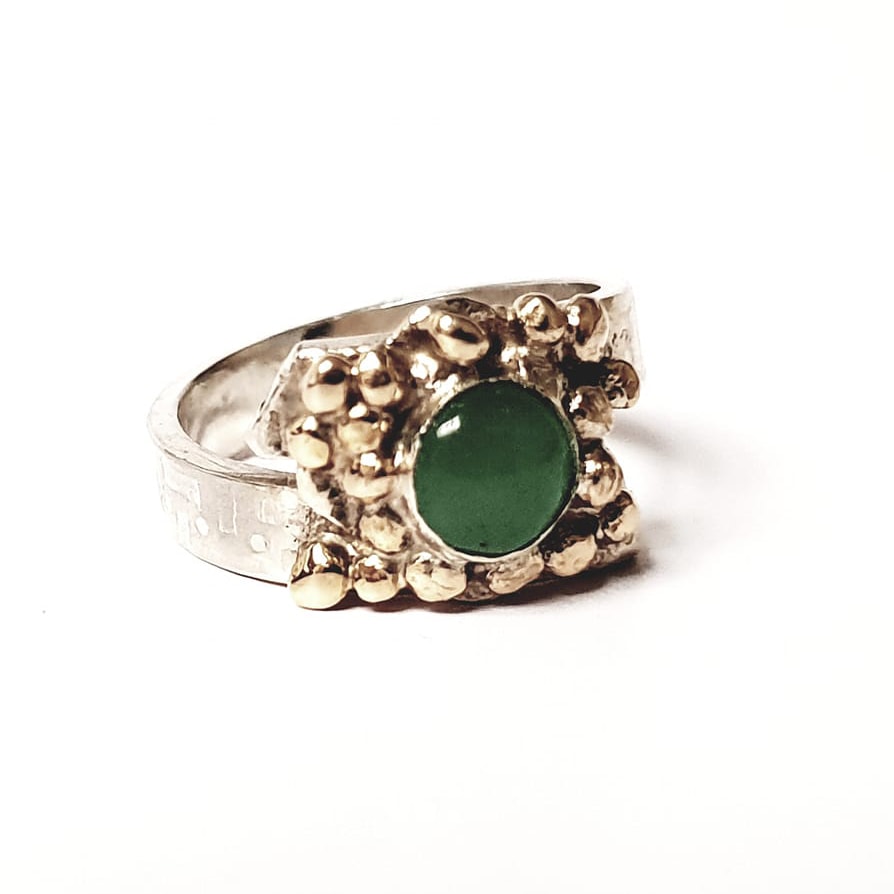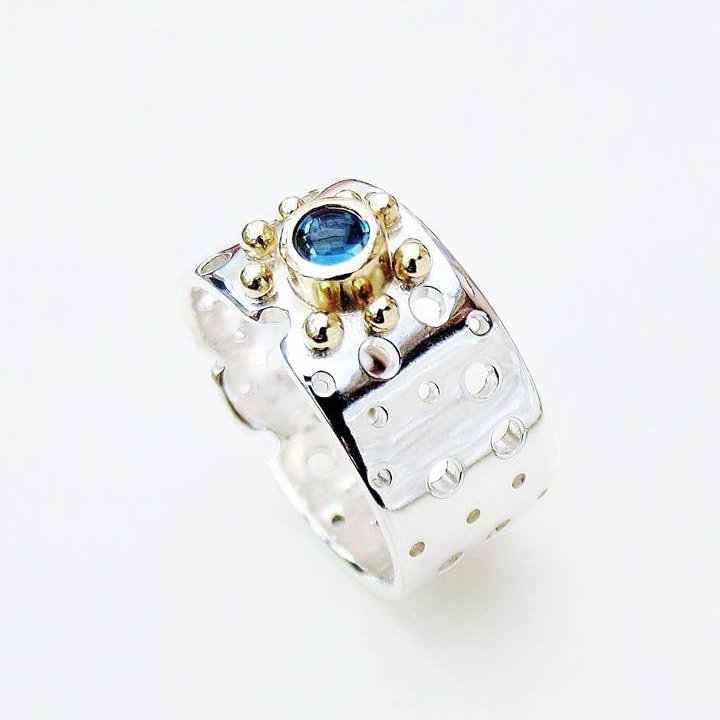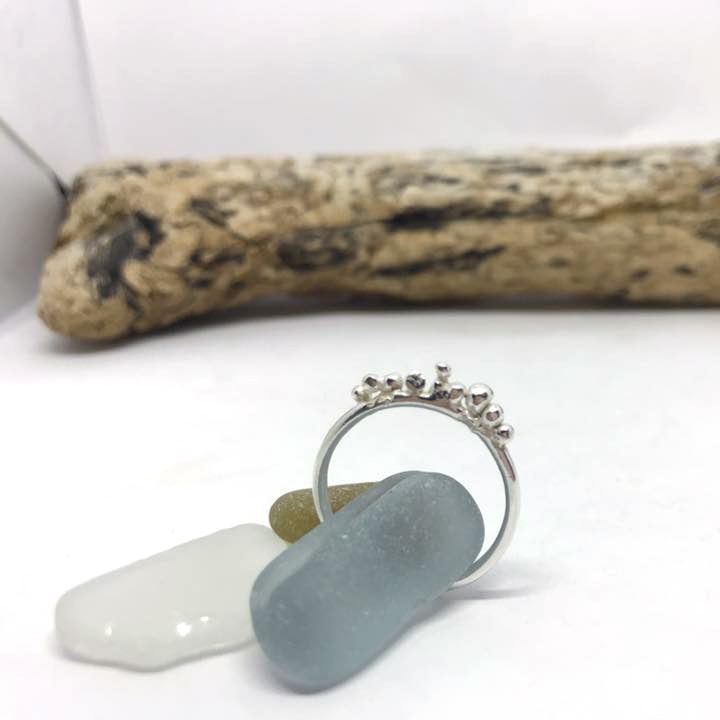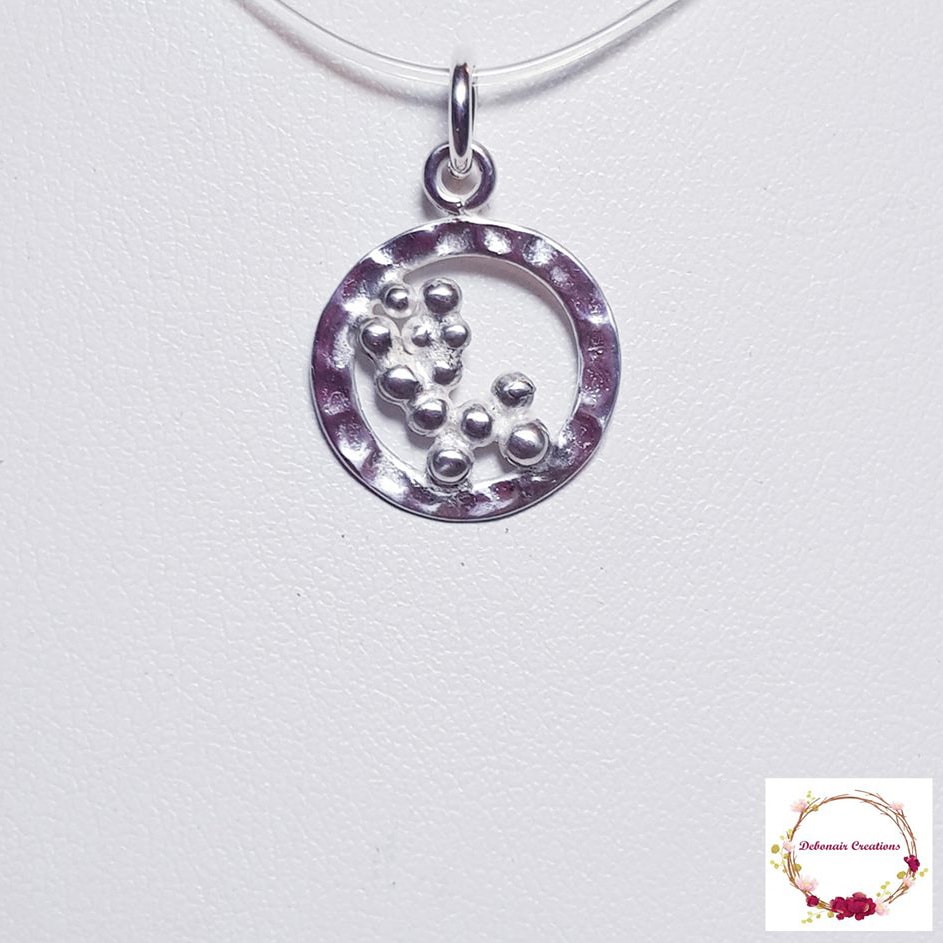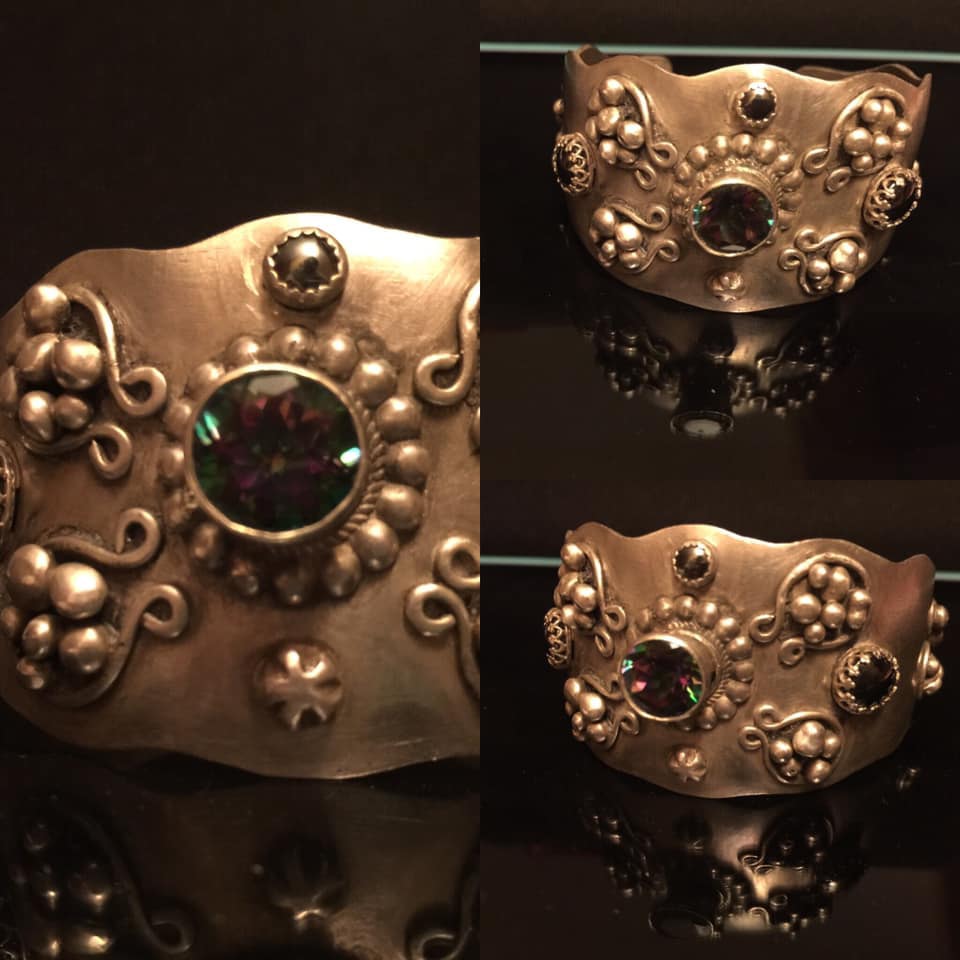What Is Granulation & Jewellery Designs We Love
Granulation is becoming a really popular technique among jewellers, it's a great chance to experiment with detailed designs and texture.
This ancient technique has now taken a modern approach and we can't wait to share some with you in this post!
What is granulation?
Granulation is the technique of applying tiny spheres or granules of metal onto a surface such as a piece of jewellery.
Top tips from 'The Workbench Guide to Jewelry Techniques' by Anastasia Young:
- Place pieces of fluxed wires into small depressions in a charcoal block to stop the balls from rolling away once formed
- Heat the wires using a torch until they melt - you'll see them turn into spheres
- If you want them all the same size, you can use small jump rings
- Pickle the granules in a jar and rinse them
- Granules can then be fused or soldered into place.
Take a look at some of our favourite customer designs, using granulation below...
Don't forget to share your designs with us on Instagram, Facebook or Twitter and use #Kernowcraft for a chance to feature
Be Inspired By Beautiful Granulated Jewellery
When Caitie Met Soda - " She’s lovingly handcrafted from a dream to reality. The dreamiest 12mm blue goldstone set in sterling silver with love. Six solid 9ct gold comets dance around her edges, as she hangs from the most beautifully delicate 18” Sterling Silver ball chain."
We stock over 800 high quality precious and semi precious gemstone cabochon and faceted stones, gemstone beads and half drilled beads for jewellery making.
Lyn Eales - "Sterling silver & green aventurine with gold granulation."
MMMJewelleryDesign - "A mystic topaz heavyweight sterling cuff with fine silver granulation."
Also in this section:
- How To Make A Bracelet
- 5 Designs for Mother's Day
- Mocha Mousse Colour Of The Year 2025
- Our Favourite Customer Designs of 2024
- Easy Handmade Jewellery Ideas For Beginners
- Our Jewellery Book Recommendations
- 14 Jewellery Designs Using Metal Clay - Copy
- Trending 'Peach Fuzz' Gemstones & Jewellery Designs
- Our Favourite Customer Designs of 2023
- How To Make Your Own Chakra Jewellery
- Our Favourite Customer Designs Of 2022
- Handmade Garnet Jewellery Designs We Love
- Trending Magenta Gemstones & Jewellery Designs
- Top 12 Best Selling Gemstone Cabochons
- Our Favourite Customer Jewellery Designs Of 2021
- 12 Good Luck Charms To Add To Your Jewellery
- Handmade Jewellery Creations Using Turquoise
- Handmade Birthstone Jewellery Inspiration
- Our Favourite Customer Jewellery Designs Of 2020
- 12 Things To Do At Home If You Love Jewellery Making
- Favourite Customer Jewellery Designs Of 2019
- 20 Handmade Heart Jewellery Designs
- 16 Amethyst Jewellery Designs We Love
- Easy Handmade Mother's Day Jewellery Gift Ideas
- 11 Amazing Handmade Aquamarine Jewellery Designs
- 17 Jewellery Designs Using Liver Of Sulphur
- Customisable Earrings For Non Pierced Ears
- 25 Additional Jewellery Making Supplies For Your Collection
- Our Favourite #KernowcraftXmas Designs
- 25 Jewellers Creating Bespoke Engagement Rings
- 15 Statement Onyx Jewellery Designs We Love
- 9 Gemstone Ring Designs We're Obsessed With
- What Is Rose Gold Filled?
- Australian Opal Jewellery Designs
- Handmade Floral Jewellery Designs
- Using Crystals For Jewellery Making
- 4 Reasons To Do A Craft Course
- DIY Hair Accessories With Gemstones
- 18 Handmade Emerald Jewellery Designs
- What Is Granulation & Jewellery Designs We Love
- 10 Jewellery Making YouTube Channels To Watch
- Favourite Customer Designs Of 2018
- Favourite Customer Jewellery Designs Of 2017
- Prosecco & Rubies’ Top Tips for Buying the Perfect Gift
- Out Of This World, Galaxy Jewellery Designs!
- How Has Making Jewellery Helped You?
- Opal Jewellery Designs We Love Right Now
- 4 Jewellery Making Books For Beginners
- 16 Sea Glass Designs We Love
- Jewellery Making With Peridot
- Jewellery Designs Using Ruby Gemstones
- 19 Boho Inspired Jewellery Designs
- What Jewellers Think Of Alligator Tape
- Top 20 #KernowcraftNature Designs
- The Gemstones For Nature Lovers
- How To Help The Environment As A Jewellery Designer
- 14 Jewellery Designs Inspired By Nature
- 22 Jewellery Designs Inspired By The Sea
- Making Your Own Wedding Jewellery
- Top 6 Chains For Your Jewellery Designs
- Soldering For Jewellers Book Review
- Make Your Own Festival Jewellery
- 10 Tips For Creating A Jewellery Wedding Collection
- Customer Creations in 2016
- 10 Reasons To Do Jewellery Making With Your Kids
- Our Favourite Halloween Inspired Jewellery Designs
- 5 Minute Handmade Jewellery Gifts This Christmas
- 6 Ways To Support Small Businesses This Christmas


